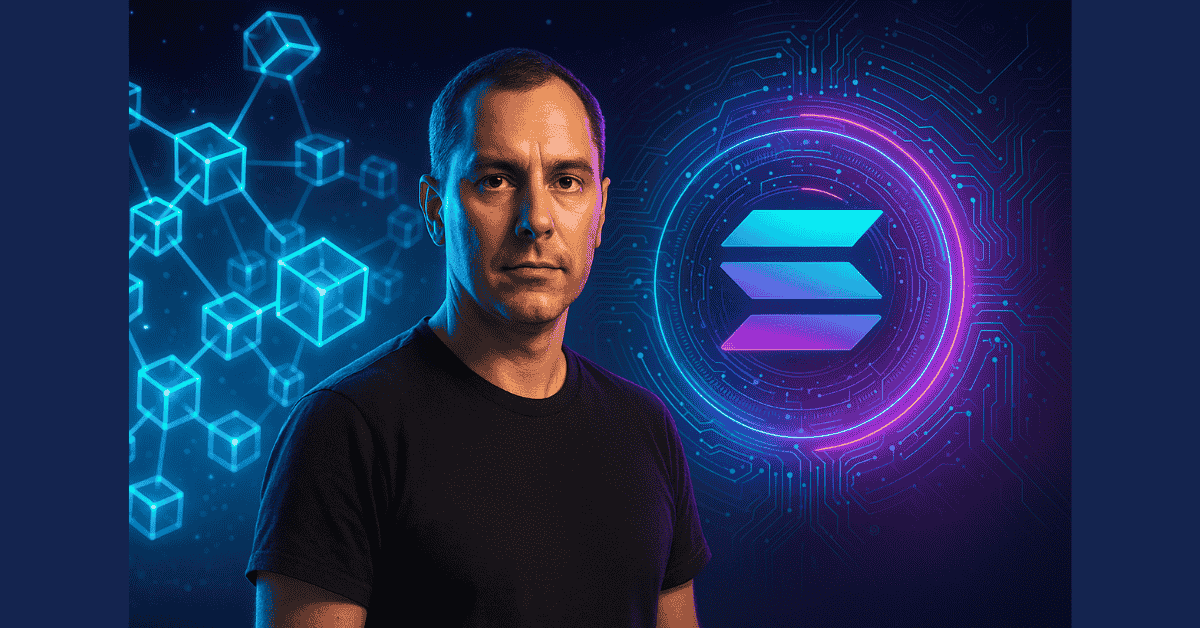
Solana’s Creator and the High-Speed Blockchain Revolution
1. From a Code-Loving Kid to the Architect of High-Performance Blockchain
Born in Ukraine and raised in the U.S., Anatoly Yakovenko spent his teenage years immersed in the internet, teaching himself programming in the C language, and dreaming of writing code that could change the world. Despite being advised to abandon Computer Science after the dot-com bubble burst, Yakovenko stayed committed to technology.
He spent nearly 13 years at Qualcomm, gaining deep expertise in distributed systems and communication protocols—skills he would later apply to the blockchain world.
2. Solana Was Born from a “Technological Epiphany”
One night in 2017, after a couple of coffees and a beer, Yakovenko had a flash of inspiration: time itself could serve as a cryptographic structure to sequence transactions. This concept became the foundation of Proof of History (PoH)—a breakthrough that allowed Solana to process transactions at unparalleled speed and scalability, without sacrificing decentralization.
Solana quickly emerged as a leading Layer 1 blockchain, capable of handling tens of thousands of transactions per second without relying on the Ethereum Virtual Machine (EVM).
3. Solana: Bold Innovation at the Cost of Stability
Unlike most other blockchains prioritizing EVM compatibility, Solana chose a different path: building a high-performance infrastructure from scratch, centered around parallel execution.
This unconventional route, however, came with challenges. The network experienced multiple outages due to congestion, pushing its engineering team to continuously refine the protocol. The high cost of becoming a validator also led some critics to question the network’s decentralization.
4. Yakovenko’s Vision: One Billion Users, One Global DAO, and a Web3 Phone
To Yakovenko, Solana isn’t just a fast blockchain—it’s the foundation for mass-scale Web3 user experiences. From the Saga phone—Solana’s crypto-native smartphone—to the vision of one billion users managing assets via DAOs, he’s working to make decentralized finance mainstream and accessible.
He believes smartphones will become personalized hardware wallets, and decentralization will be key to integrating digital assets into everyday life.
5. From FTX Collapse to Firedancer: Solana’s Path Through Adversity
Despite being heavily impacted by the FTX collapse—a major backer holding significant amounts of SOL—Yakovenko saw it as an opportunity for Solana to become free from centralized influence.
Today, Solana continues to grow across key metrics, from transaction volume and active wallets to developer events. The Solana Breakpoint conference has doubled in attendance year over year.
Yakovenko’s next frontier is Firedancer, a next-generation validator client expected to push Solana’s throughput to 600,000 to 1.2 million TPS, paving the way for real-time applications like gaming, microtransactions, and financial infrastructure.
6. Conclusion
Anatoly Yakovenko is more than a blockchain founder—he’s a tech innovator shaping the future of Web3 infrastructure. His vision is a world where users can interact securely, quickly, and freely—without intermediaries.
Solana, while not without its challenges, stands as a testament to Yakovenko’s core belief:
“Speed, transparency, and scalability don’t have to be trade-offs. They can—and should—coexist, if you commit deeply enough to the problem.”